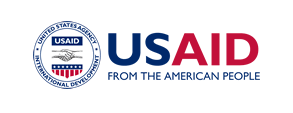The Health Policy Project ended in 2016. Work continued under Health Policy Plus (HP+) until 2022.
NEWS & VIEWS
Software tool helps identify health and education needs of citizens in poorest areas
Posted June 11, 2012
|
|
Vice President Roxana Baldetti (left), President Otto Pérez Molina (center), discuss the potential benefits of using the Social Information System tool, which maps the location of social services provision and helps ministries better manage their programs, to meet the health and educational needs of poor people in rural areas. Credit: Photo by Noticias.com (Guatemala) |
With more than 13 million people, Guatemala is the most populated country in Central America. Many Guatemalans, especially indigenous people, face barriers in accessing health services and education—particularly in rural areas of the country. This is evident in high rates of infant and maternal mortality, and the considerable drop in enrollment rates from primary school to secondary school.
An important step in enhancing health and education, and holding authorities accountable for improvements in such services, is knowing where service gaps exist. For this purpose, Guatemala is now using a new technology to support decision-making called the Integrated Social Information System. This software platform utilizes geo-referencing and mapping technology, coupled with innovative tools that allow users to access and analyze current health and education data without reliance on computer professionals—all through fast and user-friendly interfaces employed widely in business intelligence systems.
The system is currently being used in the health and education sectors to analyze information from different databases to indicate where social services programs are operating or are otherwise required, and to monitor progress of key indicators. It systematically gathers, stores, and analyzes data in the social services sector as part of the overall effort to expand the reach of health, education, and governmental services to the poor. Formerly known as the Plataforma, the system was initially developed by the Diálogo project, funded by the U.S. Agency for International Development (USAID).
By identifying geographic gaps in service provision, the Integrated Social Information System helps Guatemalan government agencies improve the management of social programs and better target resources to meet citizens’ health and education needs. Using this system, users can view the comparison between program coverage and the incidence of general poverty in Guatemala. The data also serves as an evidence base for health officials and social services agencies to use in advocating for increased funding and resources to provide health and education to poor people, especially those living in remote areas.
The tool has recently garnered the attention of high-level government officials, including the President of Guatemala, Otto Pérez Molina. In February, the Policy Project (HEPP) in Guatemala, part of the Health Policy Project (HPP), participated in a briefing by the Ministry of Social Development for the President, on the integrated Social Information System. Minister of Social Development Luz Lainfiesta led the discussion, and updated President Molina on how her department uses the Social Information System to manage programs that assist families living in extreme poverty more effectively.
The President asked Minister Lainfiesta to make a subsequent presentation to the President and members of the Social Cabinet, including Ministers and State Secretaries, and demonstrate the system’s utility in monitoring social services programs. As a result, government leaders signaled a commitment to expanding access to education and health services, and affirmed the role that the Social Information System could play in managing the process.
While the Ministry of Education has been particularly active in using the system, information from the system on health, nutrition, and other sectors can help decisionmakers identify coverage gaps in many social programs and make informed policy and programming decisions. HEPP has continued to collaborate with USAID and Minister Lainfiesta in strengthening the capacity of the Ministry of Development in using the Social Information System. This approach may also be applied across all social services sectors to improve the health and well-being of citizens.
Read more about Health Policy Project activities in Guatemala
What's New
- Something to Build On: “Innovation Exchange” Celebrates the Health Policy Project’s Close and a New Beginning
- What Will it Take for Tanzania to Achieve ART Targets and Ensure Long-Term Sustainability of the HIV Response?
- Helping Kenya’s County Leaders Advocate for Increased Health Investments
- HPP Holds Working Meeting on Ensuring Responsible PEPFAR Transitions for Key Populations
- Health Policy Project Celebrates 2016 International Women's Day
- HPP Staff Participate in White House Conference on HIV Stigma Reduction


